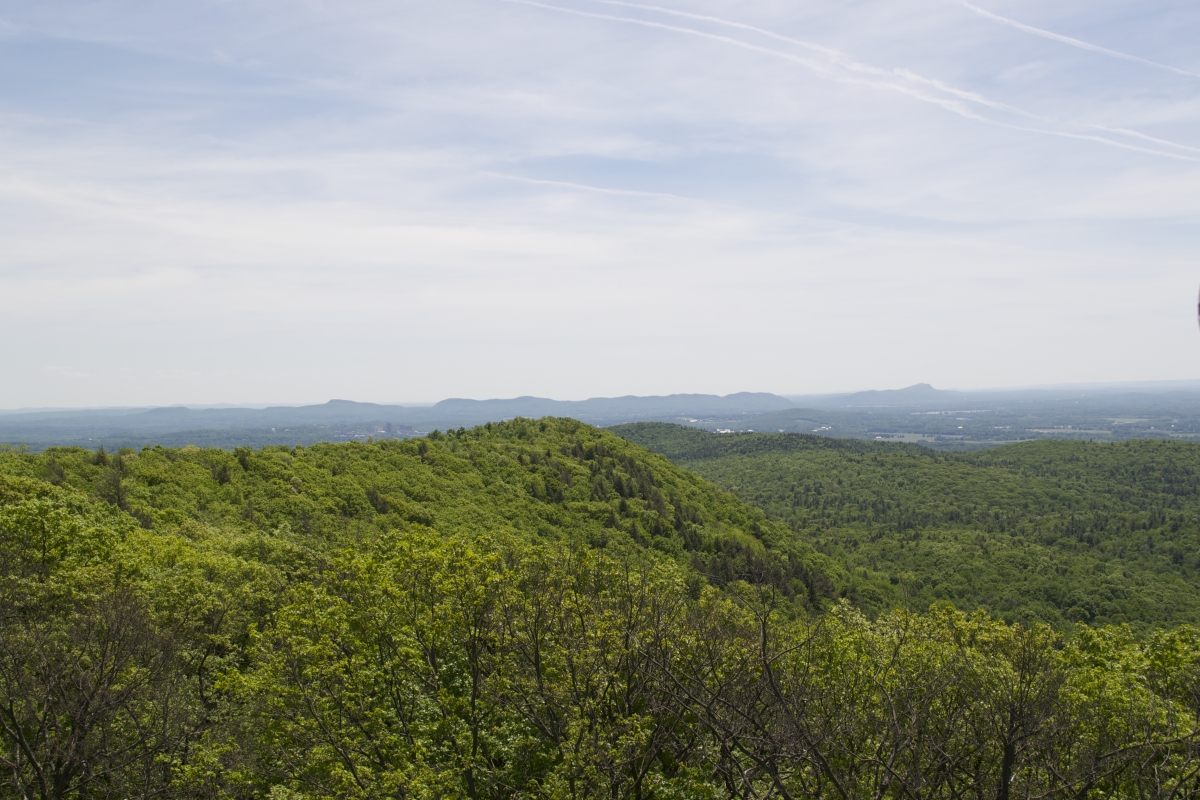You are here
Modeling photosynthesis in the canopy
 Forests play a large role in the global carbon cycle. Forests uptake atmospheric carbon through photosynthesis; and release carbon back into the atmosphere through plant and microbial respiration. Statistical models have been developed to better understand gas exchange between the atmosphere and plants. These models calculate the rate of photosynthesis in leaves given the physical conditions the leaves are experiencing. What I'm developing is a model that scales up leaf-level photosynthetic rates to ecosystem-level photosynthetic rates. These models are important for predicting future rates of photosynthesis and respiration in forest ecosystems.
Forests play a large role in the global carbon cycle. Forests uptake atmospheric carbon through photosynthesis; and release carbon back into the atmosphere through plant and microbial respiration. Statistical models have been developed to better understand gas exchange between the atmosphere and plants. These models calculate the rate of photosynthesis in leaves given the physical conditions the leaves are experiencing. What I'm developing is a model that scales up leaf-level photosynthetic rates to ecosystem-level photosynthetic rates. These models are important for predicting future rates of photosynthesis and respiration in forest ecosystems.
Previous models have assumed that all leaves photosynthesize the same, and have simplified the canopy into a single representative leaf. These models fail to represent the different types of leaves in the canopy and even on a single tree. The lower, mid, and upper canopies differ in temperature, wind, and amount of sunlight. This results in trees having leaves of different morphologies and physiologies. Our research goal is to constrain a multi-leaf model that would more accurately represent the diversity of leaves in the canopy. We hope to quantify the characteristic differences between leaves in different parts of the canopy, and ultimately assess errors associated with the usual single-leaf assumption.
![[Taking measurements of a leaf with the Li-Cor 6400]](/sites/default/files/reu/licor.jpg) In order to find the parameters to constrain a multi-leaf model, I am measuring leaf-level gas exchange in the canopy. I am using a Li-Cor 6400, which is a portable photosynthesis system. The Li-Cor 6400 measures things like photosynthetic rate, stomatal conductance, and internal CO2 concentration of individual leaves. I take measurements on leaves of the site-dominant deciduous species red oak and red maple. For each tree, we generate CO2 response curves, light response curves, and spot measurements on leaves at the top (fully sunlit), middle, and bottom (shaded) of the canopy. Towers and scaffolds allow us to take intact Li-Cor measurements from terminal leaves of trees in the surrounding area.
In order to find the parameters to constrain a multi-leaf model, I am measuring leaf-level gas exchange in the canopy. I am using a Li-Cor 6400, which is a portable photosynthesis system. The Li-Cor 6400 measures things like photosynthetic rate, stomatal conductance, and internal CO2 concentration of individual leaves. I take measurements on leaves of the site-dominant deciduous species red oak and red maple. For each tree, we generate CO2 response curves, light response curves, and spot measurements on leaves at the top (fully sunlit), middle, and bottom (shaded) of the canopy. Towers and scaffolds allow us to take intact Li-Cor measurements from terminal leaves of trees in the surrounding area.
This summer has been very enjoyable. I've learned a lot about gas exchange and forest ecology in general. I've been surrounded by wonderful people and created some awesome friendships. I've also never been better fed in my life – the food that our chef Tim prepares is never short of amazing!

